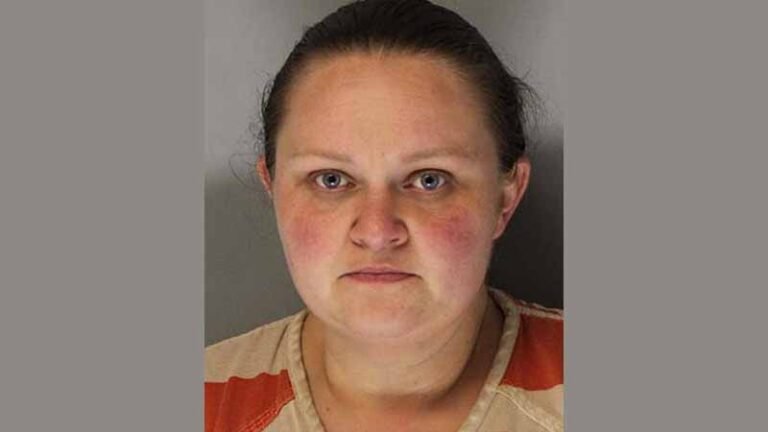A surge in COVID cases and hospitalizations comes just as a shot targeting new strains has been approved.
Now in the fifth summer of COVID, the federal Centers for Disease Control reports “high” or “very high” levels of the virus in wastewater samples in almost every state. Hospitalizations and deaths have doubled compared to the same time last year, although they remain about 75% lower than at the peak of the pandemic. report from NPR.
Navajo and Apache counties have seen a dip in reported cases in the most recent reporting period, but infection rates remain well above the national average locally.
Apache County at one point had the highest infection rate in the state, but new cases have declined by a third in the past month. Nonetheless, the county still reported a total of 3,142 new cases for the month.
Apache County was actually above the three-year average until cases begin declining at the beginning of August.
Reported cases, hospitalizations and deaths remain mostly among people older than 55.
Navajo County reported 2,117 cases in the past month, a 1% decline from the previous month. Hospitalizations and deaths remain concentrated among people older than 55, especially Native Americans, who are more likely to have other risk factors like diabetes.
Statewide, cases have increased 4% in the past month to 75,000.
New vaccines target current strains
The Food and Drug Administration approved the latest updated COVID-19 vaccines last week, now recommended for adults and children older than six months. One of the new vaccines is produced by Moderna and the other by Pfizer. Doctors say they’re a very good match for the strains now dominant in Arizona and across the nation. The vaccine should fully restore the waning protection of vaccines targeting earlier strains.
Novavax is still waiting for approval of its updated vaccine.
In Arizona, people who have never been vaccinated are seven times more likely to be hospitalized and nine times more likely to die than people who have been vaccinated and then boosted, and that’s based on the old booster shot, not the new shot targeting the dominant strains.
Health officials recommend everyone older than six months of age get the new vaccine, which is specifically designed to provide protection against the current, dominant strains. Increasingly, COVID looks like the flu. The virus continually evolves to evade the immune system, so people need an annual shot to thwart the latest COVID strains as they should with influenza. The risk of severe illness and death has declined, especially for younger people, but the risk remains significant for people over 55. The vaccine not only protects older people from severe illness and death; it sharply reduces the rate of spread from younger people to their elders.
The vaccine also appears to significantly reduce the risk people will develop the debilitating symptoms of long COVID. The recent strains now even seem more likely to cause long COVID in children, even if they’re not made seriously ill from the initial infection.
One comprehensive study estimated that 400 million people world-wide are coping with long COVID at an estimated economic cost of $1 trillion annually.
Infection still a risk; vaccines key to protection
Most people have stopped taking precautions against infection and the percentage of people taking the latest booster shot has fallen steadily. Fewer people test or isolate when they have symptoms, which could partially account for the new surge. Almost no one wears masks.
Epidemiologists insist that the latest vaccine remains the best single protection. They also recommend people who develop symptoms like a cough, fever and fatigue get tested and avoid gatherings for a least a couple of days, especially if that gathering might include older people.
Most epidemiologists agree that we’re no longer in the pandemic stage. Instead, the virus has become widespread and entrenched, which makes it endemic, like the flu. The measures like shutdowns, school closures and quarantine saved millions of lives in the early phases of the pandemic when no one had immunity or a safe and effective shot. However, those stringent measures are no longer cost effective, now that so many people have been vaccinated or recovered from an infection. told by The Hill.
Here’s what the experts recommend with the new vaccine.
- If you’ve just recovered from COVID, wait about three months before getting the new vaccine. The shot won’t provide much additional protection if your immune system has already responded to the latest strain.
- Antibodies produced in response to the shot won’t peak for about a month. So in that time exercise care about gatherings and exposure to people who may be infected.
- The vaccines reduce the risk of infection, as well as the risk of severe disease, death and long COVID if you do get infected.
- People older than 65 or suffering from conditions that weaken their immune systems should get vaccinated with the new shot immediately.
- People not in those risk groups might want to wait until October to extend the period of peak protection through the winter, though COVID shows an ability to cause peaks in infection throughout the year.
- Most insurance plans plus Medicare and AHCCCS cover the cost of the shots for free. Children can generally get free shots through a federal program.
The CDC’s Bridge Access program has provided free shots to about 1.5 million people with no insurance or poor insurance, but it will not be renewed this year.
The CDC said that $62 million in unused vaccine contract funding will be reallocated to state and local vaccination programs.



